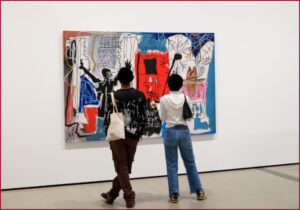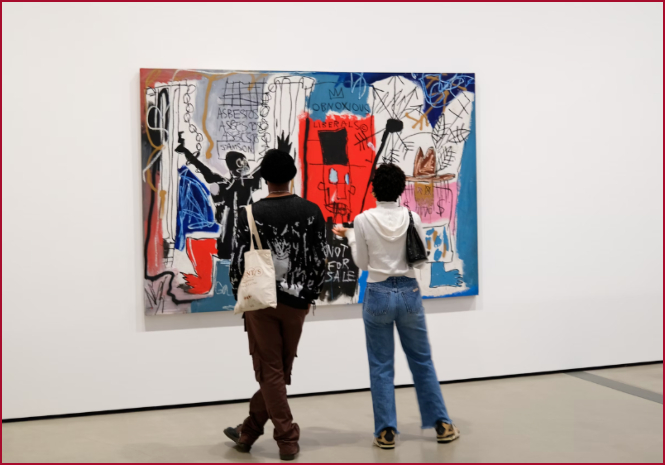When stepping into Taylor Simmons’ living and working space, one is immediately struck by its eclectic energy. “I tell people I have three roommates, and then they come here and realize, oh, you did it,” Simmons says with a laugh. The space itself, filled with unexpected objects like a massive Bart Simpson figure and angelic sculptures, is a reflection of the artist’s creative ethos—layered, dynamic, and ever-evolving.
“It’s a collaborative space,” Simmons explains. “Everything can kind of change how it needs to. We throw full-on raves here sometimes. It’s all pieced together in a way that isn’t messy, but eclectic in the truest sense.
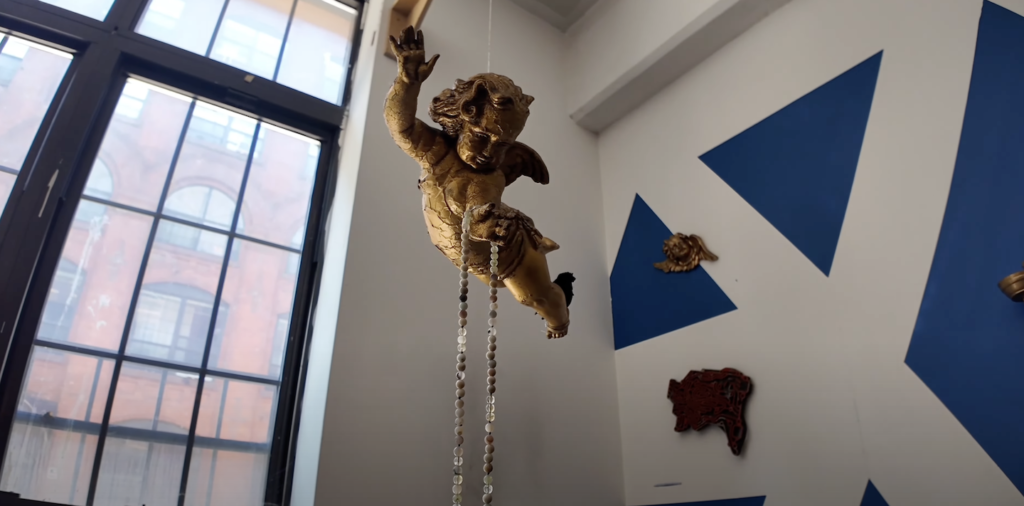
The Artistic Process: Layers and Discovery
Simmons’ approach to painting is deeply rooted in discovery. “A lot of my work starts with photo references—things I’ve collected from archives, eBay, or even old found images from places like archive.org,” he shares. The process of assembling these elements is organic, guided by intuition and personal connection.
“I was at a residency Upstate, trying to figure out what to paint for my show,” Simmons recalls. “It was last October, and the news cycle was crazy. I felt stuck, so I just started pulling every image that sparked something in me, layering and layering. Before I got back into painting, I was just drawing constantly, keeping sketchbooks full of ideas. It’s never about one single image—it’s about the layers.”
One such image that stood out to him was of a young woman in a color guard. “There’s a lot of recording of the Black South happening now, but it wasn’t always like that. To see those moments, you have to go through your uncle’s old photo albums or your dad’s pictures. That’s what I did,” he says.
For Simmons, painting these figures is more than just representation—it’s about preservation and transformation. “By pulling them from static, forgotten photographs and placing them in a new space, I’m offering them a new life, a new autonomy.”
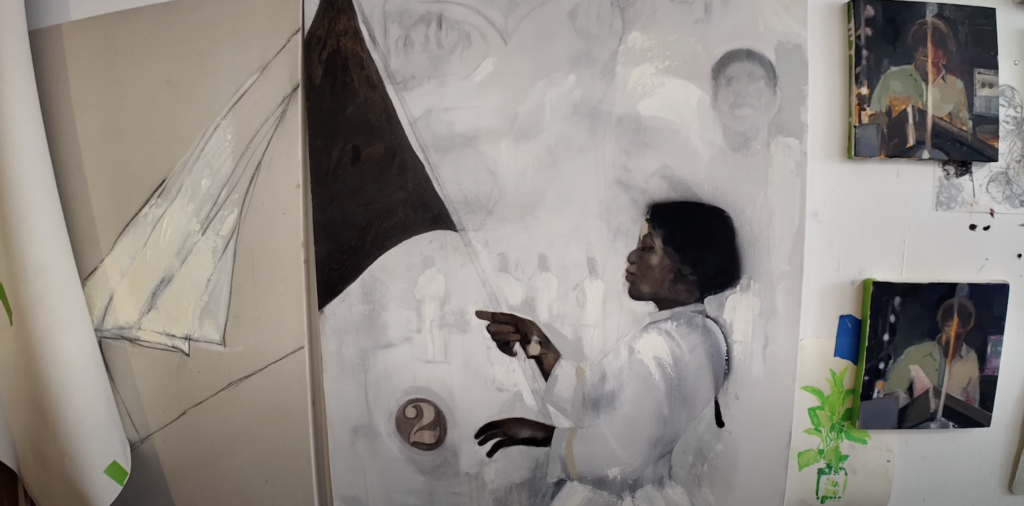
The Influence of the Everyday and the Artistic Canon
Simmons’ work often captures the overlooked moments of daily life, elevating them into something timeless. “I once saw a guy push over a newsstand on the corner of Classon, having a moment. He was on his phone when I snapped a picture, but I didn’t want to include that in the painting. Technology is already such a burden—it’s everywhere.”
His influences span classical and contemporary masters. “Lately, I’ve been looking at John Singer Sargent. He had this philosophy of painting only what’s necessary—no frivolous details. That approach speaks to me. I want to paint just enough to communicate the subject and leave room for the viewer’s interpretation.”
His work also reflects the universality of urban experiences. “Every neighborhood has that guy on the corner of the bodega. I realized coming from Atlanta to New York, and even spending time in London—it’s always the same guy. I wanted to create a painting that mythologizes that figure.”

Materials and Experimentation
Simmons primarily works with oil paints, a shift from his earlier use of acrylics and airbrush techniques. “Oil gives flesh this quality that feels alive, the way it reflects light. Acrylic always felt too flat for me,” he notes. However, he also incorporates spray paint, a nod to his past in graffiti. “Spray paint is unpredictable. No matter how good you are, you can’t fully control it. I like that element of chance—it creates new possibilities.”
This embrace of improvisation aligns with his broader artistic philosophy. “I always think about this Herbie Hancock interview, where he talked about playing the wrong note during a set with Miles Davis. Instead of correcting him, Miles played notes that made Hancock’s mistake sound right. That’s how I approach painting—mistakes aren’t mistakes, they’re just events that happened. It’s about making them work.”
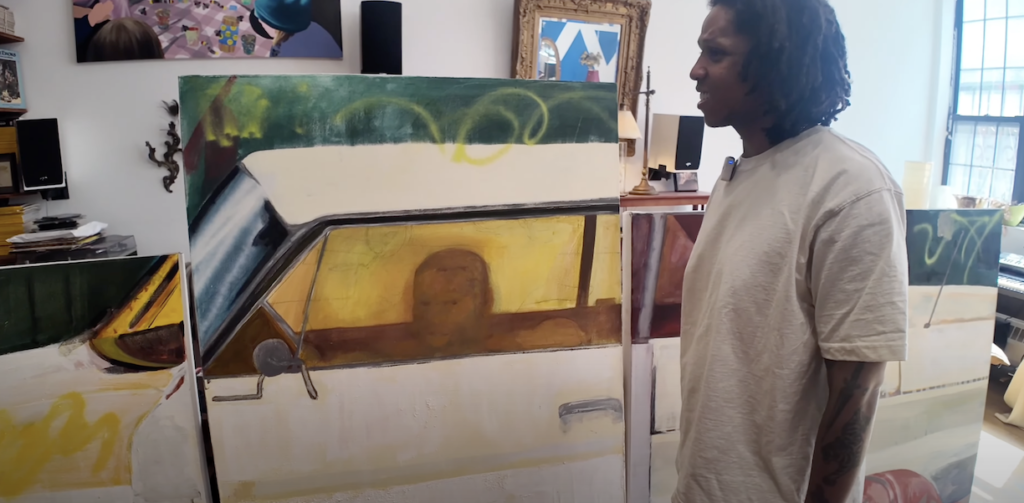
The Bigger Picture
Simmons sees his work as part of a larger conversation with art history. “By painting technically, referencing the masters, and incorporating contemporary themes, I’m positioning my work within a broader artistic timeline. It’s about pushing painting forward while acknowledging its past.”
For Simmons, every canvas is a space of discovery—a layered composition of history, personal memory, and artistic evolution. As he continues to explore and push boundaries, one thing remains certain: his work is a testament to the power of reinvention and preservation, breathing new life into the forgotten and the familiar.


